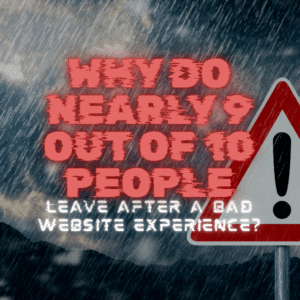Why you can trust Sunlight Media
- Expertise and Experience:Our content is crafted by seasoned professionals with extensive experience in digital marketing, ensuring you receive accurate and actionable advice.
- Unbiased Information:We provide impartial insights and recommendations based solely on what's best for your business, without any hidden agendas or promotions.
- Thorough Research:Our articles are backed by comprehensive research and the latest industry trends, ensuring you stay informed with reliable and up-to-date information.
- Transparency and Honesty:We believe in complete transparency. We disclose our sources, methodologies, and any potential conflicts of interest, so you can trust the integrity of our content.
- Continuous Improvement:We constantly review and update our content to reflect the latest developments in digital marketing, so you always have access to the most current and relevant information.

Have you ever wondered how some of the most successful brands got their names? What is it that makes them stand out and resonate with their target audience? The answer lies in the power of a great business name. A well-chosen name is essential for creating strong brand recognition, drawing in customers, and conveying the essence of your brand.
In this blog post, we’ll guide you through the process of choosing a business name that will make your brand stand out, from brainstorming techniques to legal considerations and beyond.
Key Takeaways
- Choose a business name that is memorable, easy to pronounce and reflects your brand values.
- Use brainstorming techniques such as mind mapping, word association and online tools for creative ideas.
- Evaluate potential names with feedback from friends/family & through visual identity & online presence tests to ensure an appropriate choice.
The Power of a Great Business Name

A successful company typically starts with a great business name. It sets the tone for your brand, making it memorable and easily distinguishable from competitors. A good example of this can be seen in the graphic design company sector, where brands like:
- Nike
- Apple
- Amazon
- Microsoft
have become household names due to their carefully chosen monikers.
Choosing a unique and creative name that mirrors your brand values and unique selling point can leave a lasting impression on potential clients.
Memorable and Easy to Pronounce
One of the key factors in choosing a business name involves its memorability and ease of pronunciation. Names like Apple, Uber, and Target are simple, straightforward, and are accompanied by matching domain names, making them highly effective. To craft a name that’s both memorable and easy to pronounce, consider:
- Keeping spelling simple
- Being creative
- Avoiding complex spellings
- Searching the internet for inspiration
A marketing consultant can also be a valuable resource in guiding you through this process.
A business name that is recognizable and easily articulated can differentiate your business from competitors, be easily remembered, and help create a strong visual identity to attract potential customers. By focusing on both memorability and pronunciation, you’ll be well on your way to creating a business name that will leave a lasting impression on your target audience.
Reflects Your Brand Values
Beyond being memorable and easy to pronounce, your business name should also mirror your brand values. This is especially important for a graphic design business, where a strong brand presence is crucial for attracting clients. Examples of business names that embody brand values include:
- Puzzle Huddle
- Hobby Lobby
- Los Amigos Taqueria
- Plan4Demand
- Chic Boutique Consignments
- ElemenOPillows
- Multimo
When selecting words that embody your brand values for a business name, consider:
- Utilizing verbs that reflect your brand values
- Reflecting your brand characteristics
- Ensuring clarity and straightforwardness
- Thinking about your target audience
- Illustrating your brand’s story
Following these tips can help you avoid legal trouble related to trademark infringement.
Brainstorming Techniques for Business Names

Understanding the importance of a memorable and easily pronounced business name that mirrors your brand values, you can now begin brainstorming ideas. There are several effective techniques for generating creative business name ideas, such as mind mapping, word association, and online tools and generators. By employing these techniques and exploring different categories of brand names, as identified by Alina Wheeler, you’ll be well on your way to finding the perfect name for your business.
You should set parameters and boundaries for your brainstorming session before you begin. This will help you stay focused and generate more effective ideas. With a clear understanding of your brand identity and the right brainstorming techniques in hand, you’re ready to create a list of potential business names that will make your brand stand out.
Mind Mapping
Mind mapping, a visual tool for organizing and connecting ideas, serves as an excellent brainstorming technique for generating business name ideas. By visually exploring related words and concepts, you can gain a comprehensive view of the potential names and select one that truly stands out.
There are several online tools available for creating mind maps, such as:
- MindMup
- Canva’s mind map maker
- MindMeister
- Miro’s mind map maker
By utilizing these tools and visually connecting related ideas, you can generate a list of potential business names that resonate with your brand values and target audience through the naming process.
Word Association
Word association is another useful brainstorming technique for generating business name ideas. This involves creating a list of words and phrases related to a given root word, allowing you to explore different ideas and their connections. To utilize word association, start by compiling a list of words that accurately represent your brand and services. Then, employ word-association exercises to expand your list of words and consider using a thesaurus to find synonyms and antonyms to further expand your options.
Examples of business names created using word association for small businesses include:
- FUSE (Future United Social Enterprises)
- PACE (Professional and Creative Enterprises)
- BOLD (Best Of Latest Designs)
- VIVA (Vibrant Innovative)
These names effectively communicate the qualities and characteristics of the businesses they represent, showcasing the power of word association in brainstorming unique and impactful business names.
Online Tools and Generators
You can also use online tools and generators as a resource for generating potential business names. While their dependability can be inconsistent, they offer a variety of ideas and can be a useful starting point for the brainstorming process. Popular free online business name generators include:
- Namelix
- Shopify’s business name generator
- Looka
- Business Name Generator
- Logo.com’s business name generator
- Wix’s business name generator
While utilizing online business name generators can be helpful for gaining inspiration, it’s essential to conduct comprehensive research and evaluate factors such as brand identity, target audience, and trademark availability before settling on a business name.
Legal Considerations When Choosing a Business Name

After generating a list of possible business names, considering the legal aspects of choosing a name is important. This includes conducting a trademark search, checking domain availability, and registering your business name with the appropriate authorities. By taking these steps, you’ll ensure that your business name is legally protected and avoid potential legal complications down the line.
In addition to preventing legal issues, verifying the availability of your business name is essential to establish a strong brand presence and make it easier for customers to find and recognize your brand. With the right legal considerations in place, you can confidently move forward with your chosen business name and begin building your brand.
Trademark Search
You need to conduct a trademark search to ensure that your chosen business name is legally protected and free from potential infringement issues. To search for trademarks, you can utilize the United States Patent and Trademark Office (USPTO) website and the Trademarkia website. By conducting a thorough search, you’ll be able to confirm that your desired business name is not already registered and prevent potential legal complications.
Failing to conduct a trademark search before settling on a business name can lead to:
- Infringement
- Rebranding
- Loss of customers and reputation
- Financial loss
- Missed opportunities
By carefully researching your chosen business name, you’ll be able to avoid these potential repercussions and protect your brand.
Domain Availability
Checking domain availability for your desired business name is necessary, in addition to conducting a trademark search. Securing a domain name that aligns with your business name creates a cohesive brand identity and makes it easier for customers to find your website. To verify domain name availability, you can use domain search tools provided by domain registrars such as Name.com or GoDaddy.
When selecting a domain name that aligns with your business name, consider the following:
- Use a .com extension
- Keep the domain name short and simple
- Avoid the use of hyphens, numbers, and double letters
- Incorporate relevant keywords related to your business
By securing a domain name that matches your business name, you’ll be well on your way to establishing a strong online presence and building a successful brand.
Registering Your Business Name
After conducting a trademark search and verifying domain availability, you should register your business name with the appropriate authorities to establish legal ownership. The cost of registering a business name may vary depending on the state and type of business but can range from a minimal fee of $10 to several hundred dollars.
By registering your business name, you’ll be able to protect your brand and ensure that no other business can use the same name, allowing you to build a strong brand presence and attract customers with confidence.
Evaluating and Testing Your Business Name Ideas

Once you have generated a list of potential business names and considered the legal aspects, you can start evaluating and testing your name ideas. This can be done through various methods, such as gathering feedback from friends and family, conducting visual identity tests, and assessing your online presence. By evaluating and testing your business name ideas, you’ll be able to refine your choices and select the perfect name for your company.
In addition to evaluating your business name ideas, it’s essential to consider the impact of your chosen name on your brand’s visual identity. A strong visual identity, including a well-designed logo and consistent branding, will help your business stand out and attract customers.
Feedback from Friends and Family
You can gauge the appeal and effectiveness of your business name ideas effectively by gathering feedback from friends, family, and potential customers. By soliciting input from others, you can gain valuable insights and perspectives that may not have been considered, helping you refine your ideas and select the best name for your business.
To gather feedback, you can:
- Administer customer surveys
- Organize focus groups
- Obtain input from friends and family
- Employ online feedback tools
- Monitor social media
By gathering feedback on various aspects of your business name, such as clarity, memorability, relevance, differentiation, pronunciation, visual appeal, and emotional response, you can make an informed decision and choose a name that truly resonates with your target audience.
Visual Identity Test
Conducting a visual identity test is another significant step in evaluating your business name ideas. This involves assessing the compatibility of your business name with visual identity elements, such as logos, color palettes, and typography. By testing your business name with these elements, you can ensure that your chosen name creates a cohesive brand image that effectively communicates your brand’s message and values.
To conduct a visual identity test, you can:
- Create various logo designs and color combinations that align with your business name.
- Evaluate their effectiveness in conveying your brand’s identity and values.
- Experiment with different visual elements.
- Gain valuable feedback.
- Select the most effective combination for your brand.
Online Presence Test
Lastly, you should assess your business name’s online presence by checking social media handles and search engine results. By ensuring that your desired name is available and unique across various online platforms, you can establish a strong online presence and make it easier for customers to find and recognize your brand.
To verify social media handle availability, you can use tools such as Our Name Checker or BrandSnag’s Social Media username Checker. Additionally, you can search Google and other search engines to determine how your business name is performing online and identify any potential issues or concerns. By thoroughly assessing your business name’s online presence, you can ensure a consistent brand image across all channels and attract customers with confidence.
Tips for Creating a Strong Visual Identity

With your business name chosen, your focus can now shift to creating a robust visual identity that complements your name and effectively communicates your brand’s message and values. In this section, we’ll explore tips for designing a logo, choosing a color palette and typography, and maintaining consistency across all channels.
Creating a strong visual identity is essential for establishing brand recognition, attracting customers, and setting your business apart from the competition. By following these tips and carefully considering the impact of your chosen business name on your brand’s visual identity, you’ll be well on your way to building a successful company.
Logo Design
A critical step in creating a robust visual identity involves designing a logo that represents your brand values and is easily recognizable. A successful logo should incorporate:
- Simplicity
- Memorability
- Originality
- A modern yet timeless aesthetic
- Balance
- Complementary colors
- Versatility
It should accurately reflect your brand’s identity and effectively communicate your brand’s message.
To design a logo that reflects your brand values, consider identifying your brand values, making the logo ownable, taking the necessary time, considering the company values, using a professional, and connecting the logo to your brand’s core ideas. Examples of successful logos that represent brand values include the Nike, Apple, Coca-Cola, Starbucks, and Google logos, which effectively convey the values and characteristics of their respective brands.
Color Palette and Typography
Besides designing a logo, choosing a color palette and typography that align with your brand identity and evoke the desired emotions is important. Color psychology plays a significant role in the selection of a color palette, as it can be used to evoke emotional and perceptual responses to create a distinct visual identity.
When selecting typography for branding, consider the following:
- Font style
- Size
- Weight
- Spacing
Ensure that the font is legible, easily readable, and accurately reflects your brand’s personality and values. By carefully considering the impact of your chosen color palette and typography on your brand’s visual identity, you can create a strong and memorable brand image that resonates with your target audience.
Consistency Across Channels
Consistency across all channels, including your website, social media, and marketing materials, is key to strengthening your brand image and building trust and credibility with customers. By ensuring a consistent brand presence across all channels, you’ll be able to create a unified brand experience that is easily recognizable and memorable.
To ensure consistent branding across different channels, consider the following steps:
- Define your brand personality
- Develop brand guidelines
- Maintain visual uniformity
- Create high-quality content
- Keep personality and tone consistent
- Organize marketing assets
- Regularly audit your brand across channels
By following these steps, you’ll be able to create a strong and cohesive brand identity that effectively communicates your brand’s message and values.
Summary
In conclusion, choosing the perfect business name is an essential step in building a successful brand. By following the tips and strategies outlined in this blog post, you can create a memorable, easy-to-pronounce name that reflects your brand values and stands out from the competition. With a strong business name and a cohesive visual identity, your brand will be well-positioned to attract customers and achieve lasting success.
Remember, your business name is the foundation of your brand, and a well-chosen name can make all the difference in your company’s success. Now that you’re equipped with the knowledge and tools needed to create an outstanding business name, it’s time to put your ideas into action and build a brand that truly stands out.
Frequently Asked Questions

What are the 5 rules of choosing a business name?
When selecting a business name, ensure it follows your state’s naming guidelines, isn’t too similar to a competitor’s name, is easily spellable and pronounceable, has a web-friendly presence, is memorable yet not too unique, and corresponds with your brand.
How do I come up with a catchy business name?
Select one of the top six name types, brainstorm ideas related to your business story, industry and personal inventory, use alliteration, acronyms, rhymes, puns, symbolism, and personification, or get inspiration from mythology, literature, maps, and partnering with another company to come up with a catchy business name.
How do I choose a brand name for my business?
Choosing a brand name that is meaningful, understandable, unique, descriptive, easy to spell and pronounce, web-friendly, evokes positive emotions, and reflects your brand’s essence can be a difficult task. However, with the right approach of brainstorming, considering feedback, and avoiding overly narrow or buzz words, you can create a memorable and successful brand name.
What is a perfect name for a business?
Choose a name that is easy to remember, reflects the values of your business, and is short and clear. It should evoke positive emotions in you and potential customers, be easy to spell, and possibly be trademarkable.
What should I name my graphic design company?
For a unique and memorable name for your graphic design business, consider using alliteration (e.g. Blue Bird Graphics), acronyms (e.g. JSGD – Janice Smith Graphic Design) or rhyming words (e.g. Line & Design Graphics). Alternatively, draw inspiration from ideas such as Pixel Perfect Designs, Ink and Vector, Creative Canvas, Digital Dreamers or The Design Hive.
Disclaimer
Sunlight Media is proud to be an affiliate partner of Zeb Business. In our role as an affiliate, we receive commissions for signups with our valued partners. While that’s the case, we stand by the opinions we’ve shared on this page as they are all based on thorough tests and comparisons of multiple service providers competing in the marketplace.












One Comment
Very Informative, Thank you so much for sharing, Looking forward for more such Information.